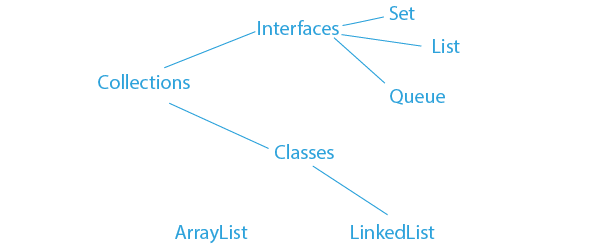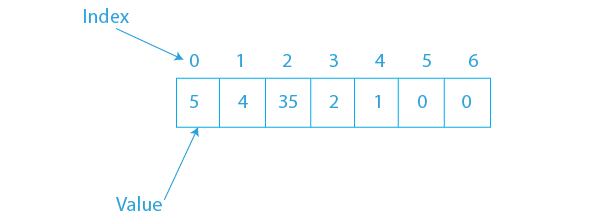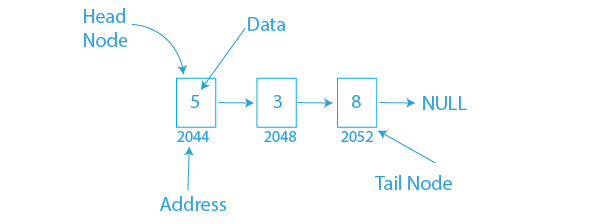In the realm of Java programming, the ArrayList and LinkedList stand out as frequently employed classes for realizing dynamic element collections. Despite their shared capacity for akin operations, these classes diverge significantly, impacting their performance and appropriateness for distinct usage scenarios.
Firstly, we will look at each in detail and then we will break down the various key difference between ArrayList vs LinkedList.
ArrayList vs LinkedList
ArrayList is a class in Java that is used to implement dynamic arrays. It provides the ability to resize the array dynamically, add or remove elements at any position, and access elements using an index. ArrayList is part of the Java Collection Framework and is a popular data structure due to its ease of use and flexibility. Upon its creation, it inherits the AbstractList class and implements the list interface in Java. Under the hood, ArrayList in Java shares exactly the same traits as Vectors in C++.
On the other hand, LinkedList is a class that implements a linked list data structure. LinkedList extends the AbstractSequentialList class and implements the Deque and List interfaces. It shares the template characteristics of a linked list with it being stored in non-contiguous spaces and with all the elements having objects containing the twin values of data and address. They use a pointer to reach the next node in a linked list. LinkedList is part of the Java Collection Framework and is often used in scenarios where frequent insertion or deletion operations are required.
Syntax – ArrayList vs LinkedList
Having seen the concepts on ArrayList vs LinkedList, let us look at the syntactical difference between ArrayList and LinkedList.
ArrayList in Java
Here is the code snippet that shows the declaration and usage of the ArrayList in Java.
ArrayList example = new ArrayList();
example.add("Prep");
example.add("Bytes");Here we are creating an ArrayList of a particular data type, i.e string in this case named example and adding two strings namely, Prep and Bytes to the ArrayList.
LinkedList in Java
LinkedList example = new LinkedList();
example.add("Prep");
example.add("Bytes");In a similar fashion to how we created an ArrayList, we create a linked list of a particular data type, i.e string in this case named example and add two strings namely, Prep and Bytes to the LinkedList.
Although ArrayList and LinkedList have similar syntax, their internal mechanisms differ. LinkedList is stored in non-contiguous memory and is referred to through pointers, while ArrayList is stored in contiguous memory locations.
Difference Between ArrayLists and LinkedList
Now that we have some clarity on the working concepts and syntactical differences. Let us look at how ArrayList vs LinkedList goes head to head in each aspect.
| ArrayList | LinkedList |
|---|---|
| 1. Dynamic Array is used to implement ArrayList internally in JAVA. | 1. Doubly Linked List is used to implement LinkedList internally in JAVA. |
| 2. ArrayList acts only as a list because it implements a list interface. | 2. LinkedList acts as a list as well as a queue because it implements both interfaces. |
| 3. Preferred for storing and accessing the data. | 3. Preferred for manipulation of data. |
| 4. Accessing data at the nth position occurs in constant time. | 4. Accessing data at the nth position takes linear time by traversing the LinkedList. |
| 5. Manipulation is comparatively slower than LinkedList because of the shifting of elements upon removal of an element. | 5. Manipulation is faster than ArrayList with the reason being that addressing takes care of elements pointing at each other. |
| 6. Storage of elements is performed at a contiguous location. | 6. Storage of elements is performed at a non-contiguous location. |
| 7. Being dynamic in nature, ArrayList is resizable. | 7. LinkedList is implemented by pointing to elements thereby no sizing issues are faced. |
| 8. The default capacity upon initializing is set as 10 with resizing done upon extension of the list. | 8. The is no default capacity as insertion is performed by interlinking of the nodes and no contiguous allocation of space. |
| 9. Insertion and deletion operations are slow in ArrayList as rearrangement is required. | 9. LinkedList is much faster in terms of insertion and deletion operations. |
Points to Remember about ArrayList vs LinkedList
Now that we have covered most of the parts of ArrayList vs LinkedList, we look at some of the points that we need in mind.
-
A LinkedList uses additional memory to store each element (known as a node) because it needs to store both the data and the location of the next node in the sequence. This applies to all nodes in the LinkedList.
-
The reason that ArrayList elements are less storage-consuming, they are more cache-friendly in comparison to LinkedList.
-
Both ArrayList and LinkedList can contain duplicate elements, insertion order is maintained and are non-synchronous.
Conclusion
In conclusion, both ArrayList and LinkedList serve as valuable tools for managing dynamic collections of elements in Java. While they offer comparable functionalities, their underlying implementations and performance characteristics vary significantly. ArrayList excels in scenarios where frequent element access and traversal are paramount, owing to its contiguous memory allocation and faster index-based retrieval. In contrast, LinkedList shines when insertion and removal operations are frequent, thanks to its efficient node-based structure that minimizes data shifting. Choosing between the two depends on the specific requirements of your application.
Frequently Asked Question – ArrayList vs LinkedList
Here are some frequently asked questions related to ArrayList and LinkedList.
Q1. What is the default size of ArrayList in Java Collection Framework?
Ans.The default size of ArrayList is 10 elements. It expands its size upon its expansion.
Q2. What is better for caching in ArrayList vs LinkedList?
Ans. ArrayList is a better option for caching as every object takes less memory in comparison to LinkedList which stores data and addresses.
Q3. How do both ArrayList and LinkedList fare in terms of data manipulation?
Ans. Compared to ArrayList, LinkedList does not require any shifting of elements when inserting or removing data. This makes LinkedList more efficient for manipulating data.
Q4. Are there any memory usage differences between the two?
Yes, there are differences in memory usage. ArrayList typically uses less memory per element compared to LinkedList since it doesn’t require additional node objects for each element.
Q5. Can I convert one to the other easily?
Yes, you can convert an ArrayList to a LinkedList and vice versa, but it might involve iterating through the elements and adding them one by one.
Related Blogs






